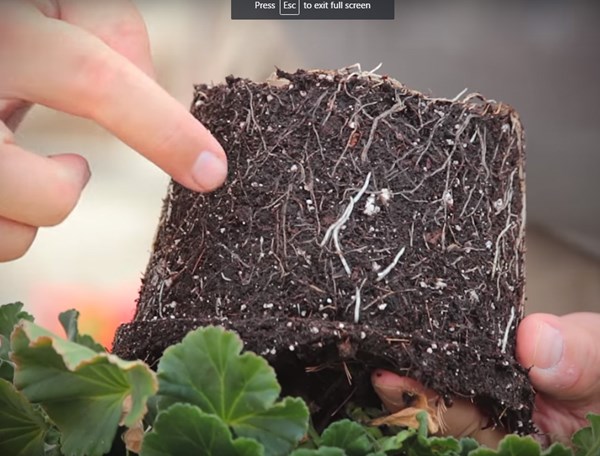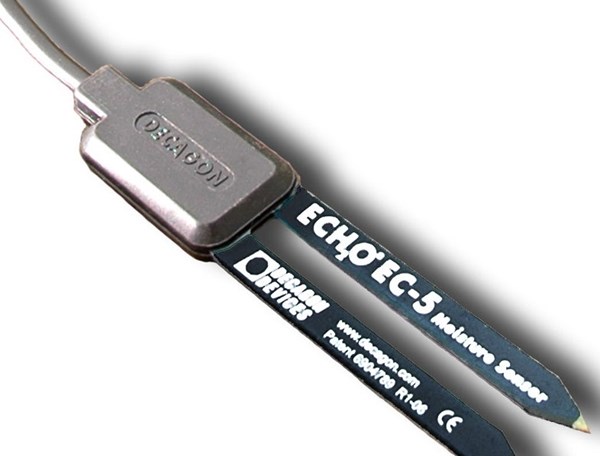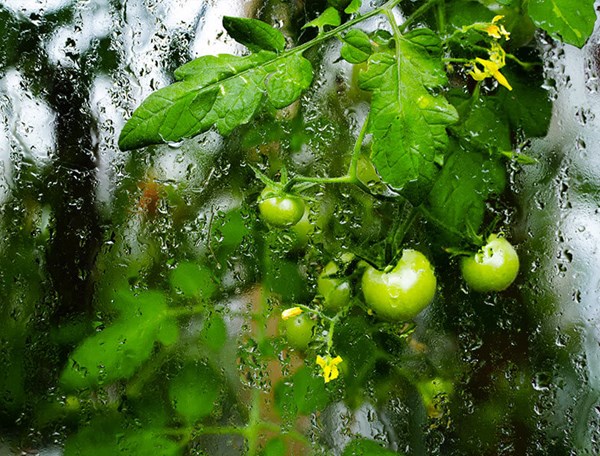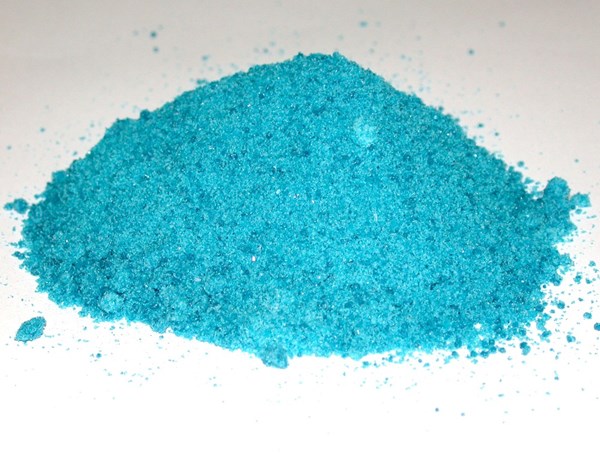Training Center
How to Reduce Overwatering of Growing Media
Thursday, September 7, 2023 | Jose Chen Lopez
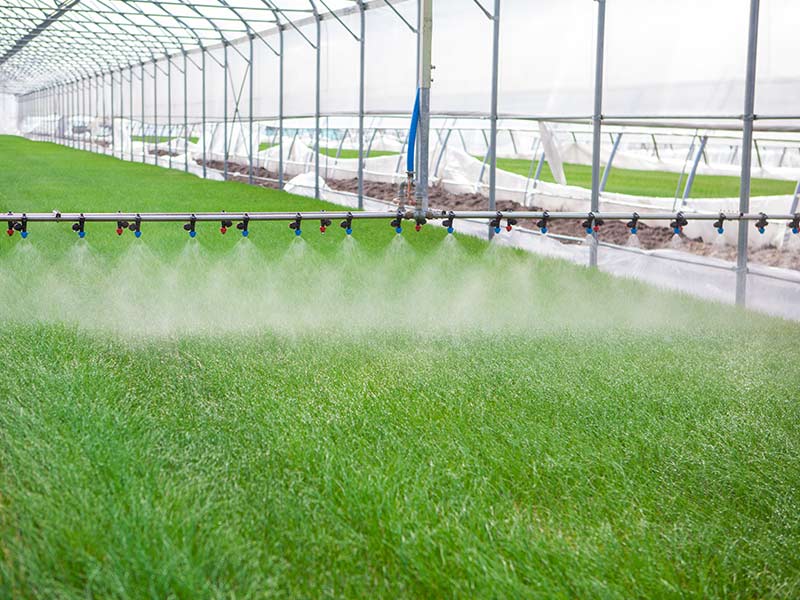
Water is essential for plant growth and development. Water is used by plants for transpiration (to lower leaf temperature), it acts as a solvent, it is involved in chemical reactions like photosynthesis, and it transports nutrients through the plant. The purpose of watering a plant is to replenish the water that was used by the plant for the above actions and to leach salts from the growing medium.
Causes of overwatering
Watering frequency and duration (amount of water) depend on the plant species, the stage of plant development, the growing medium selected and the growing environment. Water management is problematic when there is plant damage from overwatering or underwatering.
Typically, when a plant is overwatered, the leaves turn chlorotic, plant growth is stunted, algae start to grow on the surface of the substrate, the root respiration rate decreases, and the roots are more susceptible to root rot diseases like Pythium, Fusarium, Rhizoctonia and Alternaria.
On the other hand, when a plant is underwatered, transpiration ceases, the leaves are no longer turgid, nutrients, such as calcium, do not go to the furthest parts of the plant (this creates blossom end rot), the plant is under hydric stress, and growth and development are negatively affected.
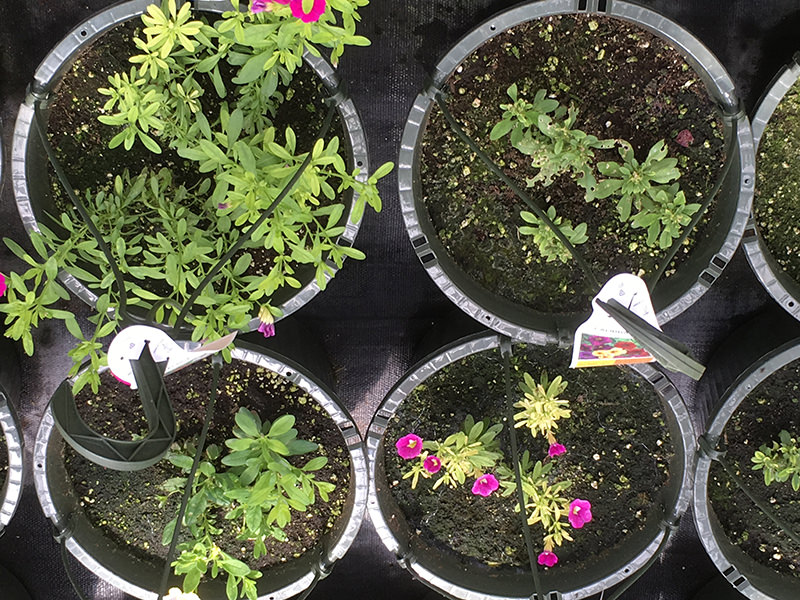
Overwatered Calibrachoa baskets often grow poorly and are chlorotic as a result of poor nutrient uptake and/or root disease. Drying these plants out will improve crop quality, reduce root disease and may minimize chlorosis. Source: Premier Tech
Substrate selection
Overwatering can be a common problem during a rainy season or the cool, short-day winter months. Therefore, it is very important to design a water management strategy that considers the crops grown, container size(s), the growing environment, and the different growing media needed.
If overwatering is a problem, the grower might consider a different container size or use a growing medium with a lower water holding capacity. Growing media with a lower water holding capacity often contain higher percentages of coarse materials like perlite, chunk coir or bark for increased drainage and porosity.
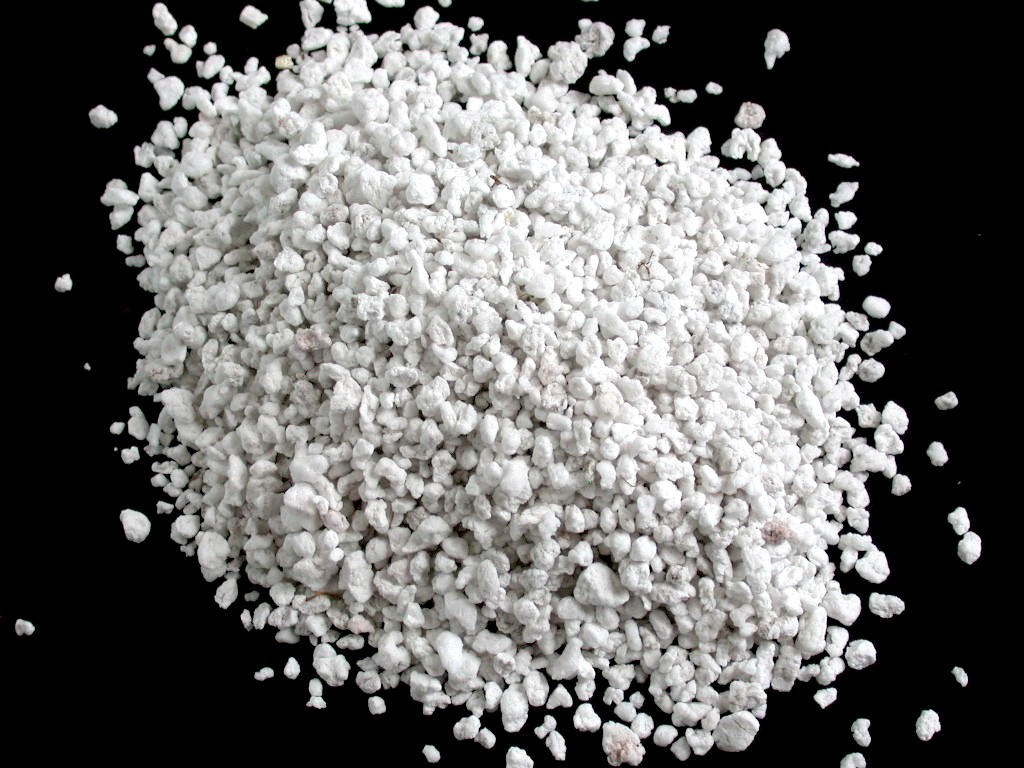
Perlite. Source: Premier Tech
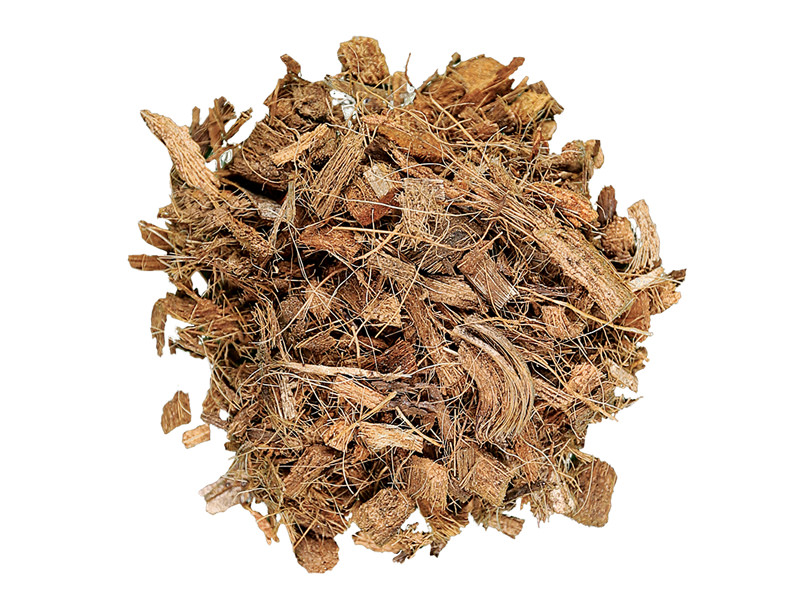
Chunk coir. Source: Premier Tech
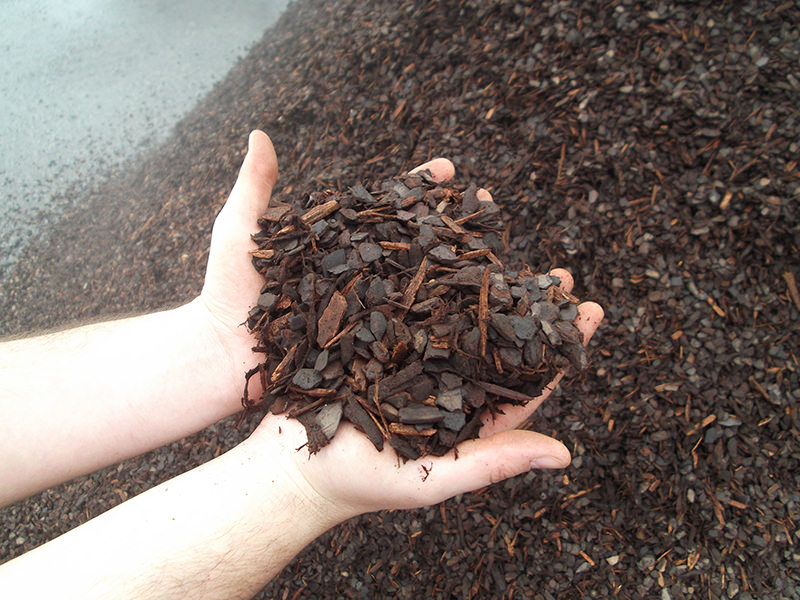
Partially composted, aged southern pine bark. Source: Premier Tech
Perlite
Perlite is an inert material that can be used in different particle sizes. In the case of PRO-MIX HP, perlite increases the air porosity of the mix since it retains less water than peat moss. Also, it does not interact with nutrients and it is free of weeds and diseases because it is produced at high temperatures.
Chunk coir
PRO-MIX HPCC MYCORRHIZAE contains chunk coir, which is obtained from the coconut husk. The husk is cut into pieces, washed to flush out salts, dried and compacted. It is then hydrated and added to our growing media products. Although chunk coir retains more water than perlite, it creates larger pores that increase air space to help plant roots obtain air for healthy growth.
Plants utilize water better, helping to reduce overwatering. By nature, coir has a high concentration of sodium and chloride. The quality of the coir depends on the country of origin and the manufacturing process. It is very important to select coir from a reputable company with high quality standards to be sure the product meets specifications and that quality standards are stringent.
Bark
The last component used to reduce the water holding capacity of growing media is bark, which is found in PRO-MIX BRK, PRO-MIX BRK20, PRO-MIX BK25 and PRO-MIX BK55 products. Composted, aged pine bark adds bulk density, reduces the water holding capacity and provides aeration. The bark component in these products is obtained from pine trees and is partially composted and aged for several months to decrease the carbon to nitrogen (C:N) ratio.
Bark quality is very important for growing media. If the bark is not sufficiently composted or if it is green, it will tie up nitrogen, robbing it from the plant, and produce heat that can damage the plant's root system.
Watering mixed crops
The problem of overwatering can be corrected by reducing the water frequency. All plants require more water as they grow in size during the season. Moreover, fast growing plants, like geraniums and petunias, require more water than slower growing plants such as shrubs, thyme, rosemary, etc. Therefore, young plants and slow growing plants must be watered less frequently than fully grown plants or fast-growing plants. Often, watering mistakes are made when all plants are watered the same, regardless of the plant species, stage of development or container size.
An easy way to identify if plants are being watered too frequently is to identify if algae are growing on the surface of the growing medium. To solve this problem, decrease the watering frequency, space plants to encourage humidity to escape from the plant canopy, and increase air flow in the greenhouse. In peat-based growing media, the color of the surface of the growing medium can be used as an indicator of when to water; allow it to change from dark brown to tan before re-watering.
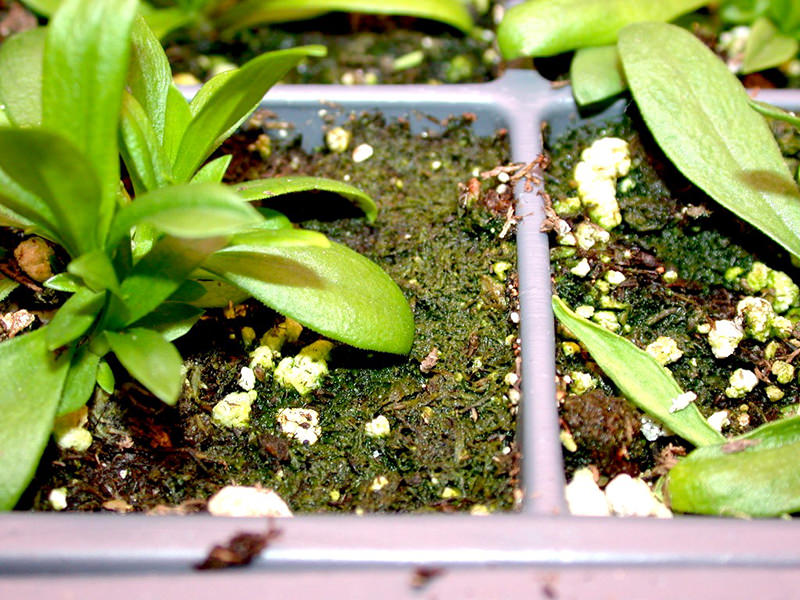
Green algae growth on the substrate surface indicates that it is staying too wet. Source: Premier Tech
Other factors that increase water retention
Compaction is another problem associated with overwatering. Compaction decreases the air porosity because the macropores (large pores between particles) collapse, forming many small micropores. Due to the capillarity of a growing medium, it will retain more water if it has a higher proportion of micropores to macropores.
Sometimes, sand is added to a growing medium to allow more drainage, but it will actually decrease air porosity and increase water content because the macropores are filled with the sand. Another mistake that is commonly seen in a greenhouse is adding a layer of perlite or sand at the bottom of the pot. The growing medium on top of the layer of perlite or sand will drain only when it is saturated with water. In effect, the depth and volume of substrate in the pot is lower, but it will stay wetter as the water does not readily flow from the growing medium into the layer of perlite or sand.
When a growing medium is over-processed, the particles will break down into small particles, which will increase water retention. The problem is more evident when the last portion of the growing medium from a bale fluffing machine is used to fill containers. Usually, the bottom of a fluffing machine is where most of the over-processed growing medium is found. An over-processed growing medium will retain more water, and therefore, the water retention will vary from the first containers filled. It is recommended to minimize the time spent fluffing a growing medium, run the ribbon blender at slow speeds, and also add enough water to bring the growing medium to the ideal water content for transplanting or seeding.
For more information, contact your Premier Tech Grower Services Representative:
 |
 |
 |
 |
|---|---|---|---|
|
Ed Bloodnick |
Nathan Wallace-Springer |
Lance Lawson |
Victor Brantly |
 |
 |
 |
|
|
Troy Buechel |
Susan Parent |
Jose Chen Lopez |
PRO-MIX® is a registered trademark of PREMIER HORTICULTURE Ltd.
Related Articles
-
How watering influences root disease in your crops
Premier Tech Horticulture Specialist Troy Buechel gives some advices about the relationship between watering and root disease.
-
Volumetric Water Content Sensors
Proper water scheduling and duration are not only essential for the production of good quality crops; they can also save water, fertilizers and energy.
-
How Does Humidity Influence Crop Quality?
Humidity can be the most difficult environment factor to control in greenhouses.
-
Matching Water Soluble Fertilizer to Water Quality
Purchasing water soluble fertilizer for your crops is not simply based on what is on sale or selecting a “geranium fertilizer” for your geraniums; it is based mostly on the quality of your water source.

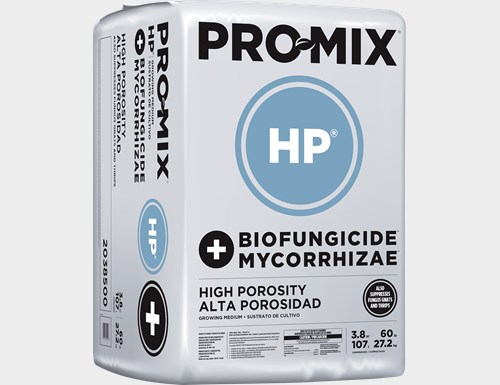
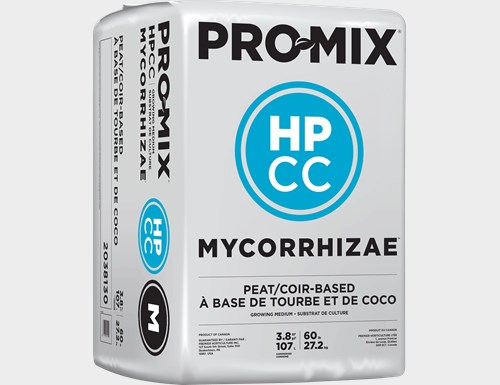
 Where to find our products
Where to find our products
